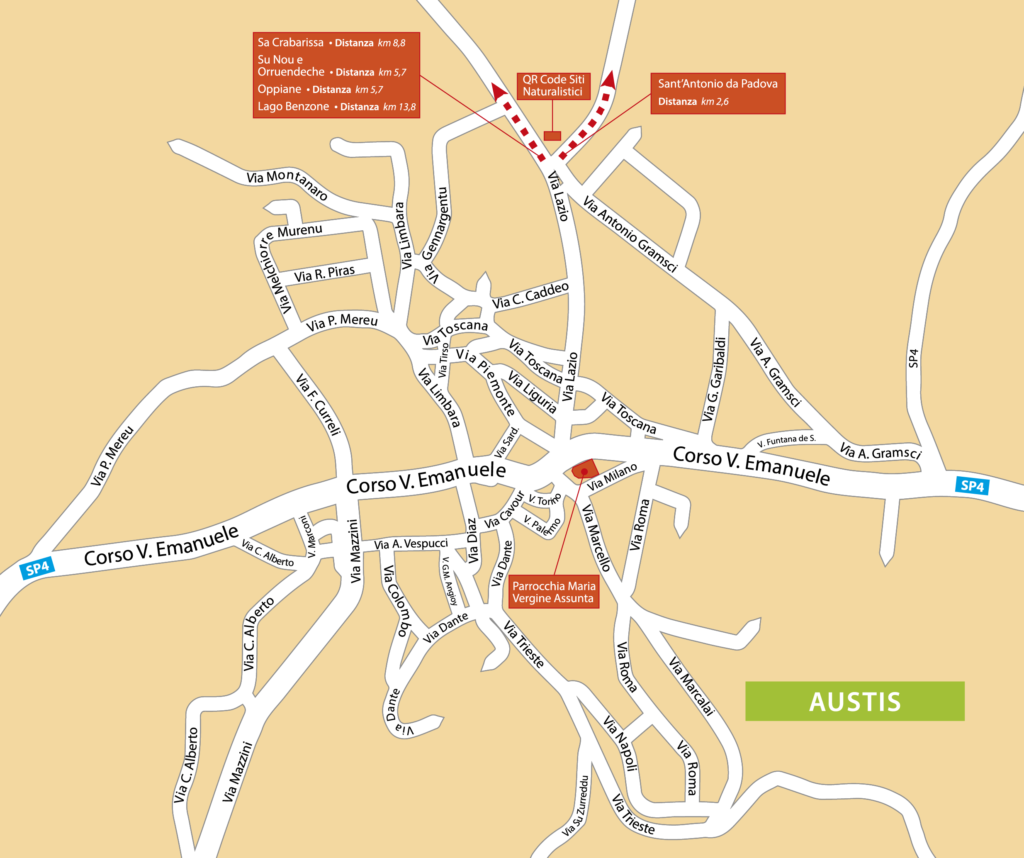Sa Crabarissa
This magnificent natural monument, formed from granite rocks polished by time and the elements, is shrouded in a romantic legend that is no doubt motivated by the exceptional nature of its appearance. It is, in fact, a stone column standing about 50 metres high that appears to visitors almost suddenly inside a small valley in which the border between the municipal territories of Neoneli and Austis passes and, therefore, in the boundary area between the Barbagia di Ollolai and the Barigadu sub-regions.
One can reach the site by car, heading to a clearing from which a dirt path starts. From here you proceed on foot, arriving at the large granite rock after about a hundred metres. The power and emotion that this natural sculpture evokes is certainly enhanced by the environment in which it stands, isolated and towering above the undergrowth of heather and strawberry trees, and with a wide and deep panorama behind it.
From this point, another large eroded and punctured granite rock (known as tafone) is visible to the south-east. Further to the east, there is an overhang, known as Su Péntumu, formed by an imposing granite wall, which descends vertically to the bush below, eroded and smoothed by water. Looking further afield, one can admire the great Ottana plain, from Lake Omodeo to the west, to the Marghine mountains to the north, on the opposite side of the plain.
The legend surrounding the Crabarissa is linked to the sinuous elegance of its silhouette. As the story goes, a young woman from the village of Cabras once met a young shepherd from Austis who, as was the custom until the last century, went shepherding with his flocks to the plains of Oristano to escape the harsh mountain winter climate.
The two youngsters fell in love and daydreamed about their future marriage, exchanging gifts and promises. At the end of winter, however, the young shepherd left to drive the cattle back to the mountains, leaving the girl to await his return.
After a long period of waiting, the young maiden, who was greatly concerned, decided to go and look for her betrothed in Austis; when she found him, she discovered that he was already married to another woman.
Legend has it that on the way home, the girl, due to her great pain and despair, was turned to stone, thus giving birth to this magnificent rock that resembles the silhouette of a woman wrapped in a shawl.
According to oral tradition, the tale was handed down as a warning to young people not to play with other people’s emotions, but to respect them.
Text by Laura Melis
From Via Lazio 21 to Sa Crabarissa link for path plotted on Google maps: https://goo.gl/maps/a6aeRNo326nzNDfz8
 BIM TALORO
BIM TALORO 